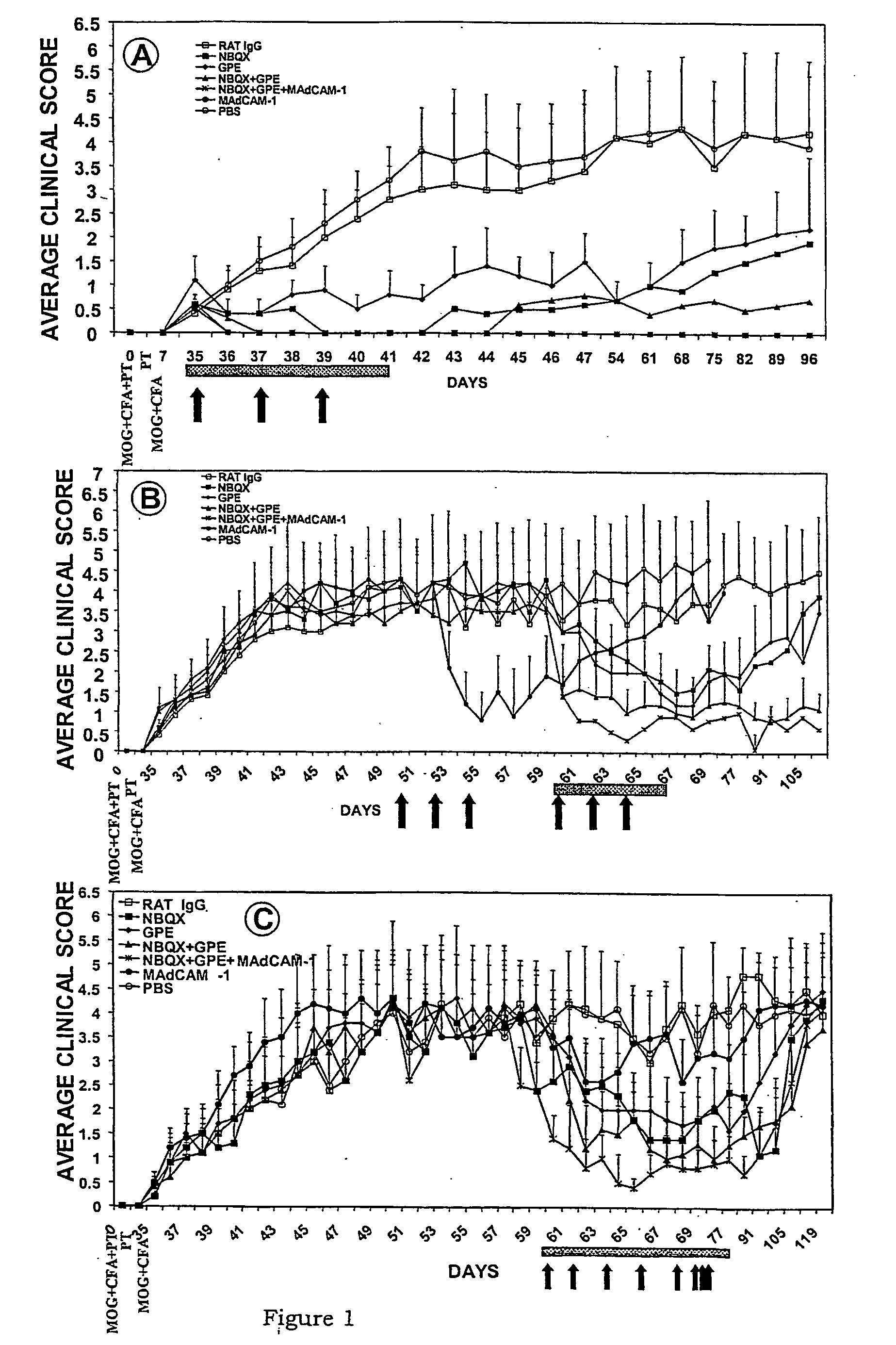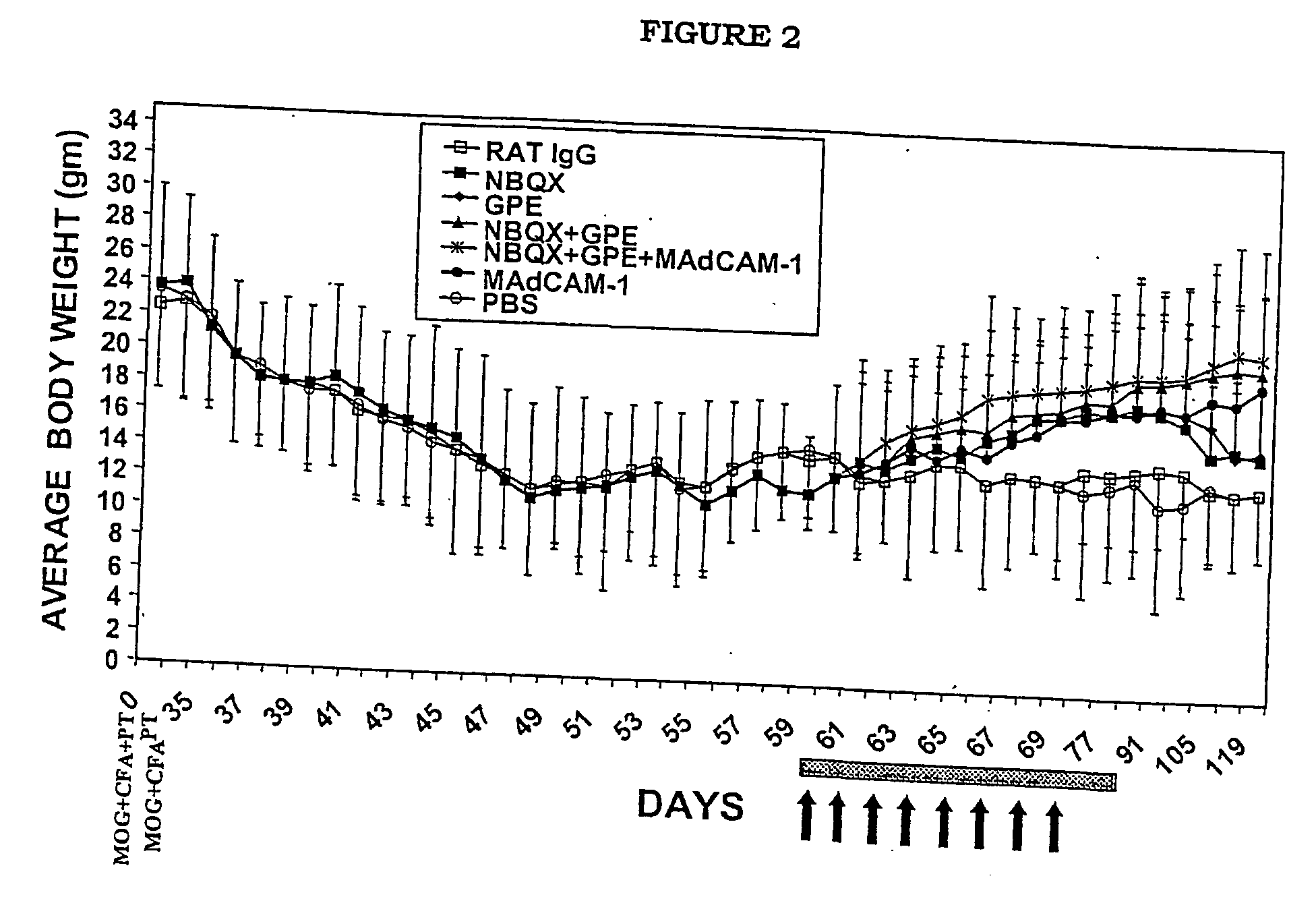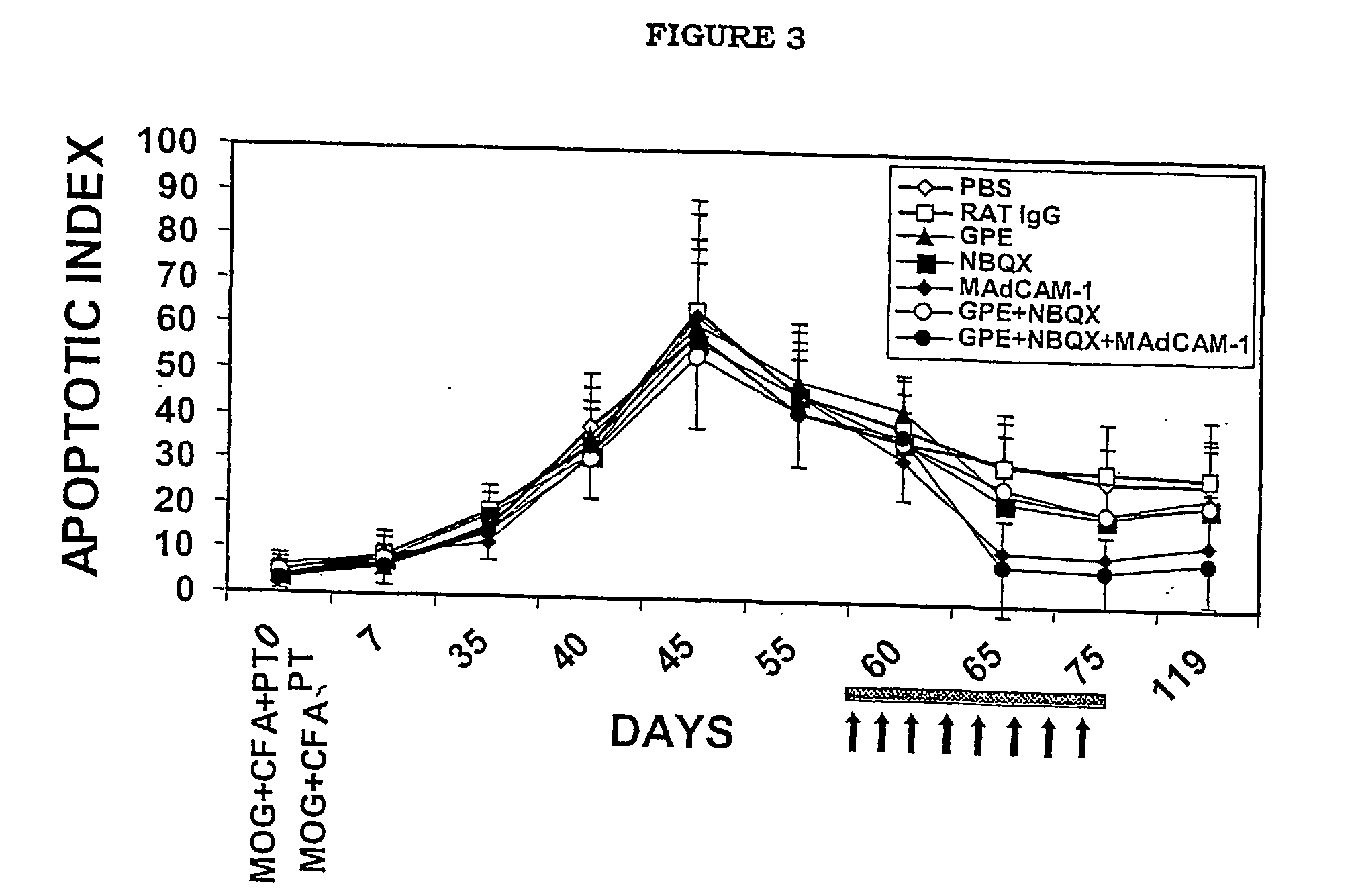Treatment of demyelinating diseases
a demyelinating disease and demyelinating disease technology, applied in the field of demyelinating disease treatment, can solve the problems of preventing madcam-1 monotherapy, affecting the remission of advanced eae, and affecting the remission of advanced eae, and achieve the effect of remission
- Summary
- Abstract
- Description
- Claims
- Application Information
AI Technical Summary
Benefits of technology
Problems solved by technology
Method used
Image
Examples
examples
[0060] The following experimental protocol followed guidelines approved by the University of Auckland Animal Ethics Committee.
Animal Model of MS
[0061] C57BL / 6 mice (8-10 week old) were injected subcutaneously in one flank with 300 .mu.g of MOG35-55 peptide (MEVGVYRSPFSRVVHLYRNGK); synthesized by Mimotapes Pty Ltd, Clayton, Australia and emulsified in CFA containing 500 .mu.g of Mycobacterium tuberculosis H37Ra (DIFCO Laboratories, Detroit, USA). They also received 500 ng of pertussis toxin (List Biological Laboratories, CA, USA) in 200 .mu.l PBS intravenously via the tail vein, followed 48 hours later by a second dose. A second injection of MOG peptide was given in the absence of pertussis toxin one week later in the opposite flank, as described previously (Kanwar et al., 2000b).
Treatment Protocols
[0062] Two treatment protocols were employed, involving the treatment of early disease, versus advanced disease. For early disease, reagents were administered at day 35 (following MOG inje...
PUM
| Property | Measurement | Unit |
|---|---|---|
| Mass | aaaaa | aaaaa |
| Body weight | aaaaa | aaaaa |
| Body weight | aaaaa | aaaaa |
Abstract
Description
Claims
Application Information
 Login to View More
Login to View More - R&D
- Intellectual Property
- Life Sciences
- Materials
- Tech Scout
- Unparalleled Data Quality
- Higher Quality Content
- 60% Fewer Hallucinations
Browse by: Latest US Patents, China's latest patents, Technical Efficacy Thesaurus, Application Domain, Technology Topic, Popular Technical Reports.
© 2025 PatSnap. All rights reserved.Legal|Privacy policy|Modern Slavery Act Transparency Statement|Sitemap|About US| Contact US: help@patsnap.com



